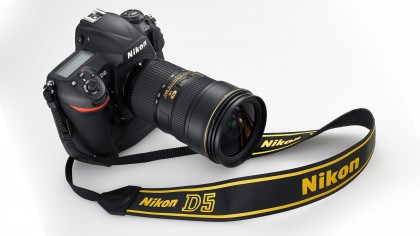Why you can trust TechRadar
The Nikon D5 is designed for use by professional photographers who need a fast, responsive camera that can shoot in low light and survive the odd knock or splash of water. With its maximum continuous shooting rate of 12fps (when the autofocus and metering systems are engaged), super-quick autofocusing, huge sensitivity range and tank-like build, it certainly delivers in all areas. But does it offer the Nikon-using pro enough to justify upgrading from a D4S?

Increasing the pixel count of the D5 by 25% in comparison with the 16MP D4S enables the new camera to capture more detail than the model it replaces. And although our lab tests indicate that this has a slightly negative impact upon the dynamic range and the signal to noise ratio in raw files, high sensitivity images look very slightly better.
That said, I'd still recommend steering clear of values above ISO102,400, and certainly above ISO409,600 or higher unless it's imperative to get an image and quality isn't a major concern.
We liked
The D5 has the type of build we expect from a professional-level camera, and while the control arrangement isn't perfect, existing D4S users will find it easy to swap between models. The touchscreen is a useful addition when reviewing images, but it would have been nice if Nikon had made a bit more use of this feature.
Even in low light the D5's autofocusing system is extremely capable, and it's possible to get long sequences of sharp images of fast-moving subjects.
We disliked
As well as providing more room for a larger battery, the purpose of the vertical grip on twin-gripped cameras is to make them easier to hold and operate when shooting portrait-format images. The D5's vertical grip goes some way to achieving this, but it's not as successful as the Canon 1DX Mk II's implementation.
The AF controller (aka sub-selector) isn't in the same location relative to the grip, so as you swap from horizontal to upright shooting you find yourself reaching towards the wrong place. This is something D4S photographers will be well used to, and which most will have adapted to, but it's not ideal. Nikon could also do with rethinking some of the interface to make key features easier to find and adjust quickly.
The counter argument to these handling issues is that the D5 has been kept the same to make it easier for working photographers to upgrade from the D4S, or keep their D4S as a second body to the D5. But if that's the case, does that mean we can never have any handling improvements?
The D5's limited 4K recording capability is disappointing, and it rules the camera out for many photographers wishing to shoot both stills and video professionally. This may change if the promised firmware upgrade arrives soon.
Final verdict
The Nikon D5 is a great camera and a worthwhile upgrade to the D4S, but there are a few niggles that if addressed could make it an absolute belter. The top sensitivity expansion settings are headline-grabbing and largely useless to most photographers, but the image quality in the native sensitivity range is high, provided you keep an eye on the exposure.
Autofocusing is blisteringly fast, and able to keep up with fast-moving subjects and a continuous shooting speed of 12 frames per second, making the D5 a great choice for professional photographers looking to shoot this summer's Olympic games – but a few may look enviously at their Canon-toting colleagues, who have better video capability and more streamlined handling.
